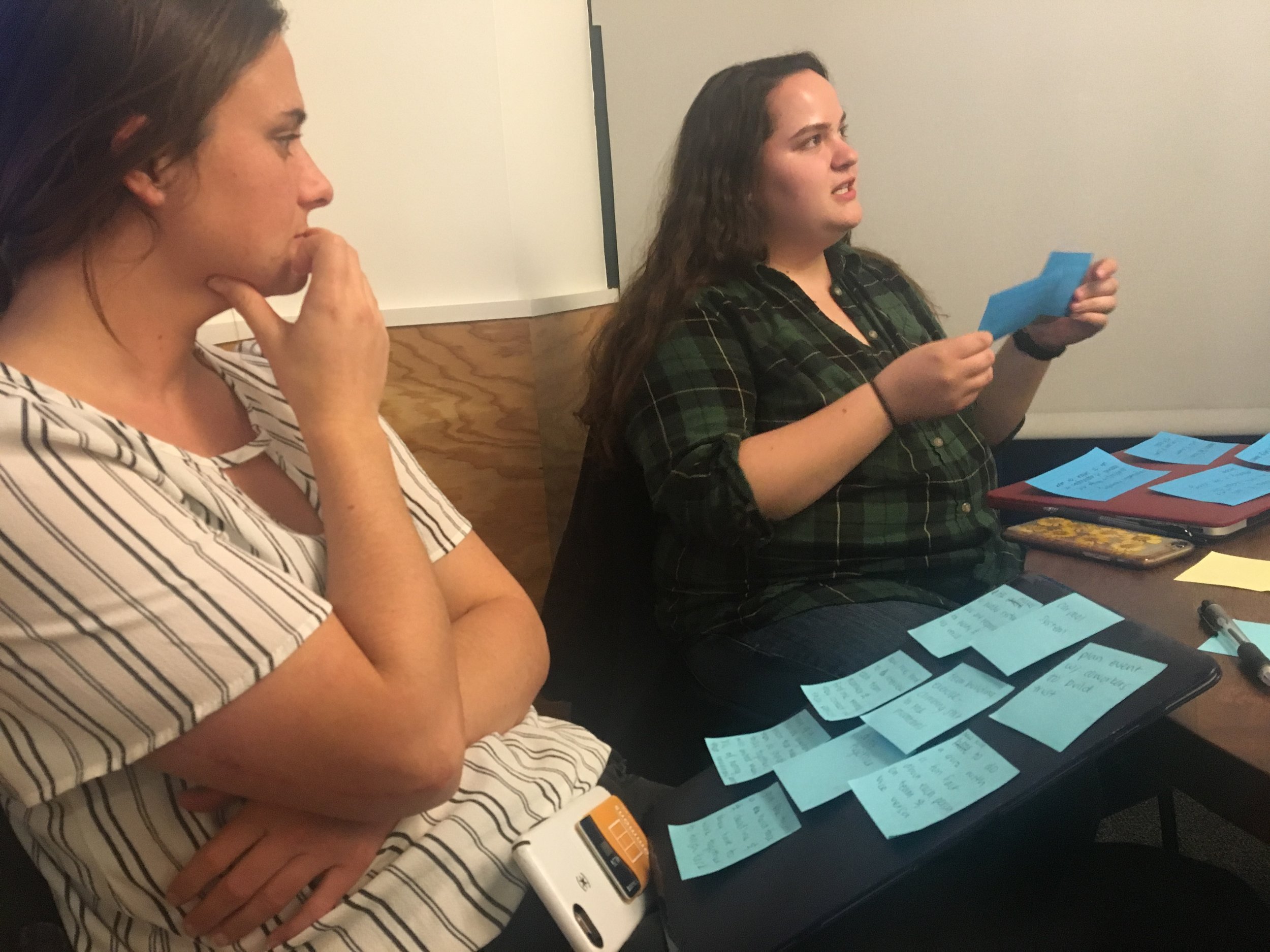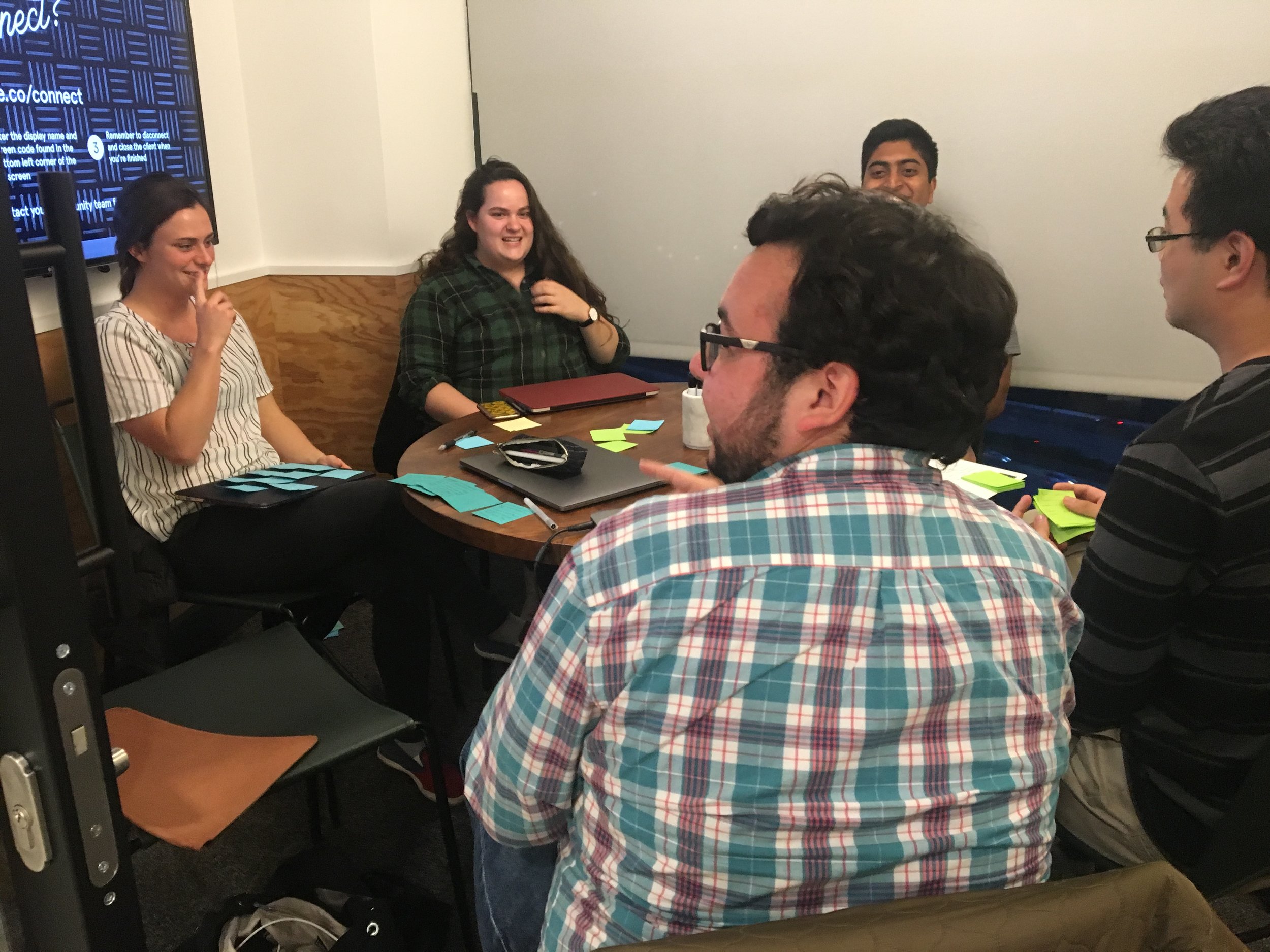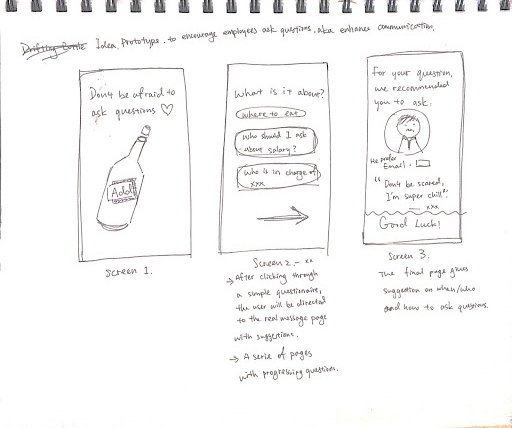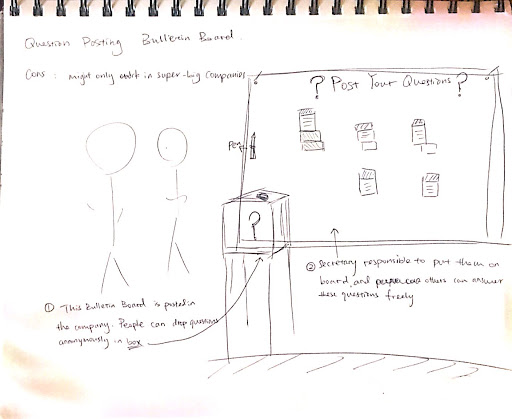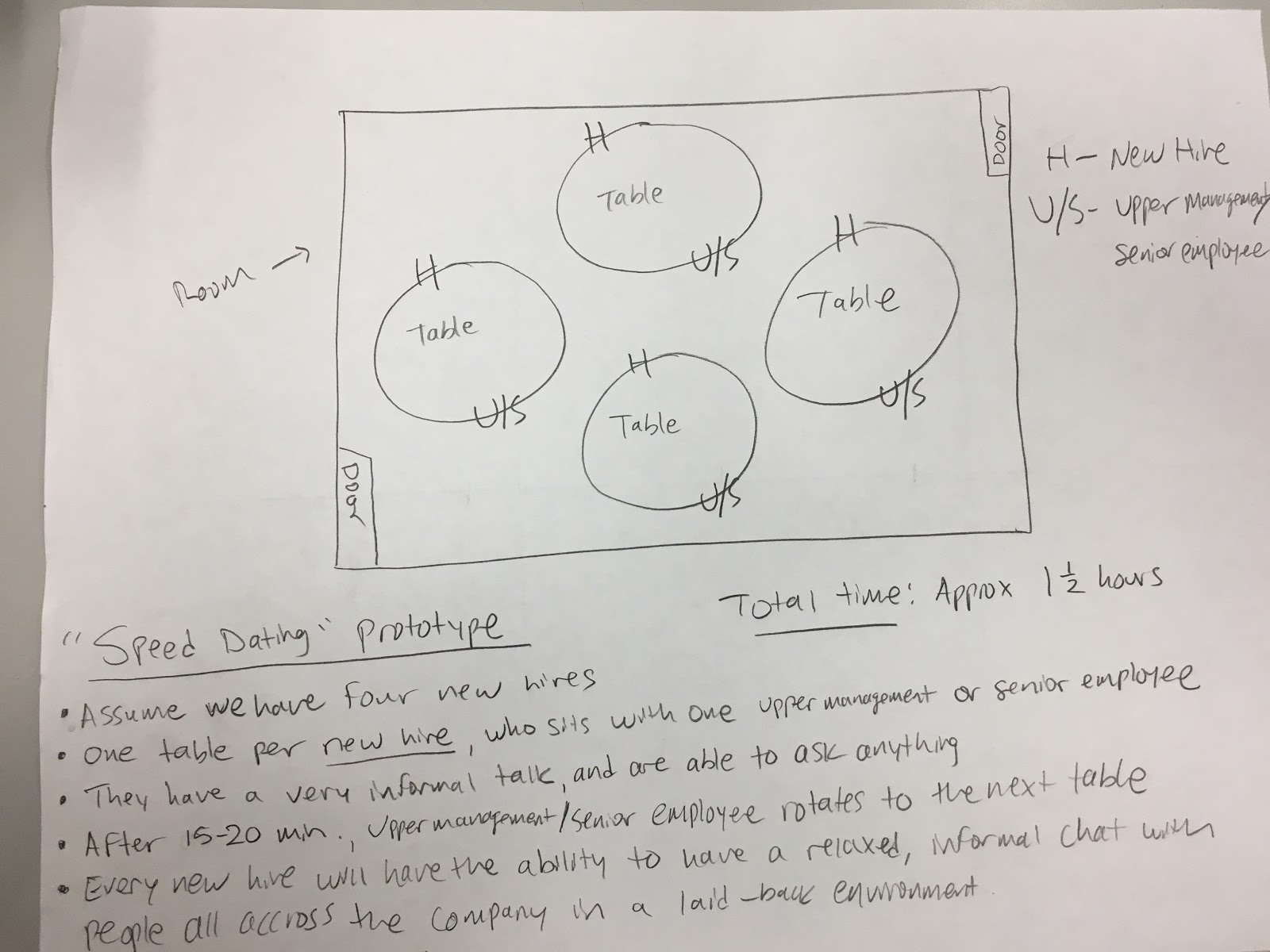My Role: User Research · Prototyping · Visual Design
Scope: Class Project · 10 weeks · 6 students
Team Members: Rushil Reddy · Longinos Guizar · Marie Schneider · Shannon McAndrews · Kevin Ly
Practices: Human-Centered Design Methodology · In-person Interview · Survey Design · User Testing
Problem Space
Onboarding is an accelerating process of integrating new employees into a company and its culture. Research showed that proper employee onboarding results in higher job satisfaction, organizational commitment, and employee engagement (1). With that said, onboarding is also a challenging process. Since every new hire has a different starting point, a generalized onboarding cannot bring everyone up to speed. On the other hand, every company has very different structures. Few companies have the will and resources to design customized onboarding for individuals.
So how might we mitigate the difficulties of the onboarding process to integrate new hires into the work space better?
In 10 weeks, we investigated the cause of this problem through extensive user research and brought insights we found to fruition after rounds of testing and prototyping.
Onboarding is like a buffer zone for new hires. Successfully bringing them up to speed will limit the chance of collision in workspace.
Identify Stakeholders
To tackle this complex problem, we began by understanding the onboarding journey. We started by identifying key stakeholders—those who were either familiar with the process or had recently gone through it themselves—to gather meaningful insights and first-hand perspectives.
Why is it so hard to ask questions?
We interviewed over 30 people holding various positions, the majority of them are new hires who just started working. We were particularly interested in their narratives of the onboarding process, and how they adjusted to their job afterward. We also talked with a few HRs, and senior-level managers to understand the reasoning behind the current onboarding design and the unaddressed weak-spot of new hires they identified during collaboration. We found some really interesting conflicts centered on “asking questions”.
While we heard complaints from HRs and managers that newcomers should ask more questions, new hires have varied concerns about asking the right person the right questions. What caused new hires to feel insecure when asking questions? We dug back into interview transcripts and synthesized 3 main challenges:
Lacking Effective Mentorship
We found out that new hires who established a close relationship with their mentors tend to adjust the company faster, while most of those with loosely-connected mentors or without one expressed the fear of don’t know who to turn for questions.
No way to learn about Work Culture
Many interviewees suggested they felt fully adjusted when they got familiarized with rules people followed, such as when is the best time to ask questions and what application to use for fastest response. The unspoken work culture is one of the most difficult things to learn for new hires fresh out of college. Yet possess of this information is key for new employees to collaborate effectively with colleagues.
Big picture is as important as work guidelines
Most new hires we interviewed expressed their curiosity about how their actual work can contribute to the product or company’s goal as a whole. Most companies’ onboarding process failed to introduce this prospective. This might have hindered new hires from finding responsible personale when they had concerns.
Reframing the Problem
Changing the onboarding structure of each distinctive company is not feasible within a limited time, we decided to approach the problem from new hires’ perspective. We used Psychological safety to define the idea that one feels comfortable enough within a team setting both giving and receiving feedback (or constructive criticism) or asking questions. The contrary of this may cause tension among new supervisors and coworkers, which slows the new hires in becoming a fully productive member of their team.
Brainstorming Ideas
We approach the problem from 2 main directions:
Provide an anonymous environment for New Hires to ask questions securely
We hope anonymity can help relieve the fear of asking wrong questions when employees are not familiar with work culture in the beginning and establish a similar feeling of having a mentor.
Improve new hires’ communication skills to prepare them for possible situations at work
Establishing a relationship with mentors, learning about work cultures and quickly finding out a company’s work hierarchy all required back up of excellent communication skills. We hope through certain educative way; new hires are better equipped before they start working.
Stakeholder Feedback
We then presented these three ideas to our previous interviewees to get their feedback. We want to know if our proposals truly addressed their struggles:
The Anonymous Issue
The two ideas based on constructing an anonymous environment weren’t as successful as we expected. A completely anonymous question board seemed to be impossible to create. The major concern we had still was centered on fear to be recognized. On the other hand, a complete anonymous platform may cause other issues. Past studies had shown that when people are completely anonymous, they may act unethically.
Thus, we decided to proceed with the workshop idea. The focus for next stage is refining details of the workshop design. We especially paid attention to the physical settings of the workshop, the activities we should incorporate and the estimated timeline of it.
Our Workshop Design - “Life After Graduation“
For our final design, we created a workshop for recent graduates who are about to start a new job. This workshop would take place on college campuses. It would give students the information they need to jump into a new, unfamiliar environment with confidence.
Hosting the Workshop
After all the research, endless discussion, we managed to reserve a conference at WeWork to make our workshop real! We invited 6 people as participants and successfully ran through the workshop.
Me lecturing as one of the presenters during workshop
Participants taking the DISC Assessment
What did the participants say?
We were curious about how our participants say about our workshop. Did they feel it is helpful? We planned to follow up with them after a few month of work, but at the moment, we conducted a pre-workshop and a post-workshop survey to find out how successful our solution was in addressing our problem.
Our stakeholders overall do feel that the workshop enhanced their knowledge on communicating effectively in workspace:
Future Directions
Choosing Interactive Space
The space we used to host the workshop proved to be a little crunched when people walked around for ice breaker. We would consider finding a more loosely structured space for future sessions, so that it facilitate more interaction between participants.
Building Context for Roleplay
Everything worked pretty well except the roleplay we designed. Most of them liked it but claimed to be a little confused at first without enough prompt. It was a fun experiment though. If we were to host the workshop in the future, we would consider giving participants paper with context of the scenario and some hints to help them get into the role better.
Takeaway
From ideation to prototyping, people’s inputs and reaction to our proposed questions and product, allowed us to hone in on details that could be improved. These lessons learned were especially important when refining our problem statement.
When taking on this problem, we had big dreams for where this project would take us. We still have big dreams, but they are much more refined. Beginning with such a broad scope, we were able to effectively narrow down our project by immersing ourselves in the life of our users by user research, interviews, and storyboards.
Evidence, as it is, allows bottom-up design, where ideas inform the final solution. This avoids the failures of top-down design, which may miss important insights. We are glad we learned this throughout this process, as again it helped us to narrow down our design problem early, without having to change our entire prototype. That being said human centered design is difficult, especially on a time crunch. We always wish we could test and iterate more on our design.
Overall we had a fun experience and learned quite a lot about the principles and implementation details of iterative design and about the personal interactions of the onboarding process.










